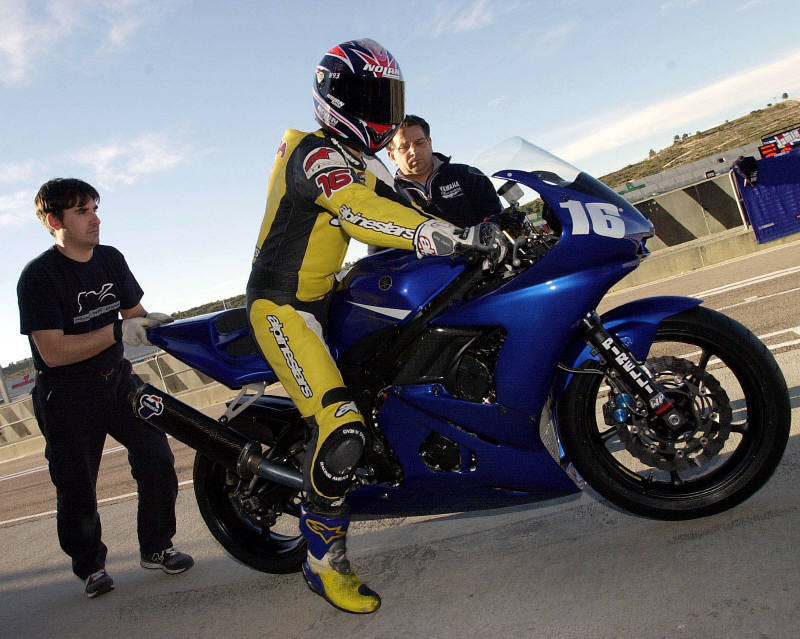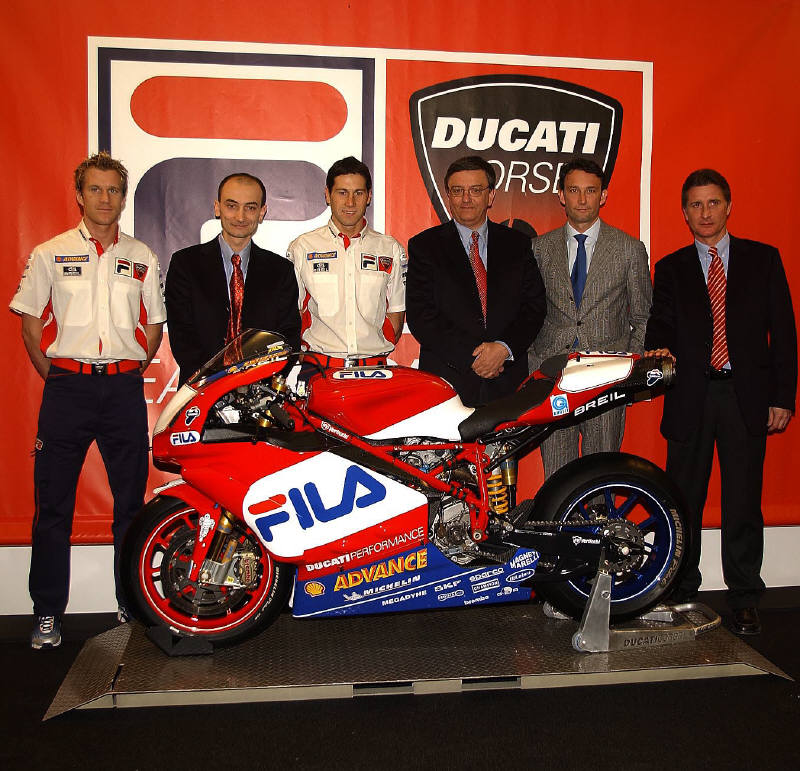Ducati 999 - Technical analysis.
Ducati's 'third' chapter in the World Superbike Championship gets underway with the new 999, officially launched today in Milan.
The teams WSBK history began in 1988 with the 851/888, continued with the 916/996/998 from 1994-2002 and now the next era gets underway with the debut of the all new 999.
The 999 shares most of the fundamental engineering components with its 998 predecessor: twin-cylinder testastretta desmo engine, tubular trestle frame, underseat exhausts.

Ducati's 'third' chapter in the World Superbike Championship gets underway with the new 999, officially launched today in Milan.
The teams WSBK history began in 1988 with the 851/888, continued with the 916/996/998 from 1994-2002 and now the next era gets underway with the debut of the all new 999.
The 999 shares most of the fundamental engineering components with its 998 predecessor: twin-cylinder testastretta desmo engine, tubular trestle frame, underseat exhausts.
The Factory '03 Superbike has been designed hand-in-hand with the road-going 999R, guaranteeing that the homologated bike has all the characteristics required for this high-performance racing version.
The working organisation was fundamental in this respect: a totally dedicated team, led by Ernesto Marinelli, was responsible for every phase of the 999 F03's development, but it constantly interfaced with the group that developed the 999R streetbike, led by Gianluigi Mengoli.
The 999 was designed using experience accumulated over the years with the development of the 998: a key element here is the dual rear swingarm, which was successfully tried out by Carl Fogarty in private testing at Phillip Island in 2000, but which was not fitted to the 998, because it differed considerably from the production version.
This solution has considerably improved the behaviour of the bike on used tyres, by eliminating the chattering that was often present in the same conditions on the 998.
The entire project has followed the methods used for the development of the Ducati Desmosedici MotoGP: an integrated virtual design, and particular attention paid to aerodynamics, which together with the new swingarm is one of the strong points of the new bike.
The changes made to the 999 twin-seater to produce the 999R, which was the starting-point for the 999 Factory, are the result of wind-tunnel work carried out in collaboration with the British aerodynamics specialist, Alan Jenkins.
The results obtained in the wind tunnel and the first track tests have confirmed that the surfaces of the 999 are much more efficient than the 998 in aerodynamic terms, producing a considerable increase in top speed.
The racing position has also been modified, with the rider now sitting further forward and lower down for a better control of the bike.
The Ohlins front fork is the same as the one used on the Desmosedici MotoGP. In particular it is characterised by the forkbottom designed to be integrated with the gas reservoir container, making a very compact design.
As for the F03 engine, this is an evolution version of the short-stroke F02 engine (104x58.5 mm) introduced last year. Numerous modifications have been made to improve reliability and usability. The camshaft profiles are different, to reduce timing belt wear.
The exhaust system, developed in collaboration with Termignoni, is particularly sophisticated: the muffler is based on a mixed-chamber and absorption system which has brought about a weight reduction of 50% over the 998's oval double exhaust system.
Ducati Corse's computational fluid dynamics experience in numerous applications was fundamental to achieve this result. Since 1996 all the fluid dynamics parts of the engine have been developed by means of computer simulation programmes, the reliability of which is now excellent.
The electronics have also undergone an important development: the Ducati 999 in fact shares the same electronic management system as the Desmosedici. This is a cutting-edge piece of hardware, capable of producing accurate management of the Testastretta's engine mapping.
Technical Specifications: Ducati 999 Factory '03.
Engine (Testastretta):Type:4-stroke L- twinCapacity:999ccBore x stroke:104mm x 58.8mmTiming system:Desmo DOHCValves:4 per cylinderECU:Ignition-injection managed by Magneti Marelli MF5Fuel injection:Magneti Marelli electronic injection systemInjector:Magneti Marelli IWF1, one per cylinderFinal drive:Regina chain Brake horsepower:189HP at 12500 rpmTop speed:305km/hLubrication:gear oil pump, with oil cooler
Chassis / Suspension:Frame:tubular steel trestleFront suspension:42 mm pressurized upside-down ?hlins forkRear suspension:Dual-side aluminium swingarm, with ?hlins shock absorber
Trasmission:Gearbox:6-speedClutch:dry multiplate clutch
Brakes:Make:BremboFront:two 305mm ? or 290mm ? vented floating discsRear:one 218mm ? vented floating discFluid:Shell Advance
Tyres:Make:MichelinFront:12/60-420 (16.5")Rear:19/67-420 (16.5")
Overall dimensions:Length: 2060mmWidth:678mmDry weight :164kg, with oil and waterWheelbase:1440mmFuel tank capacity:23.9 l


